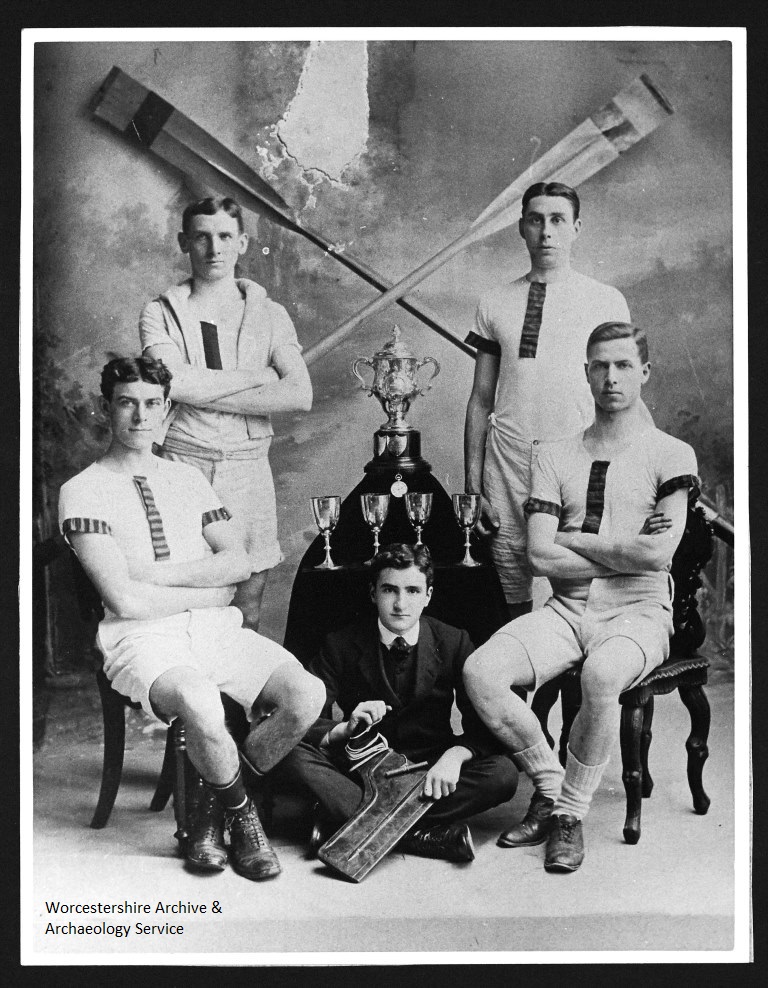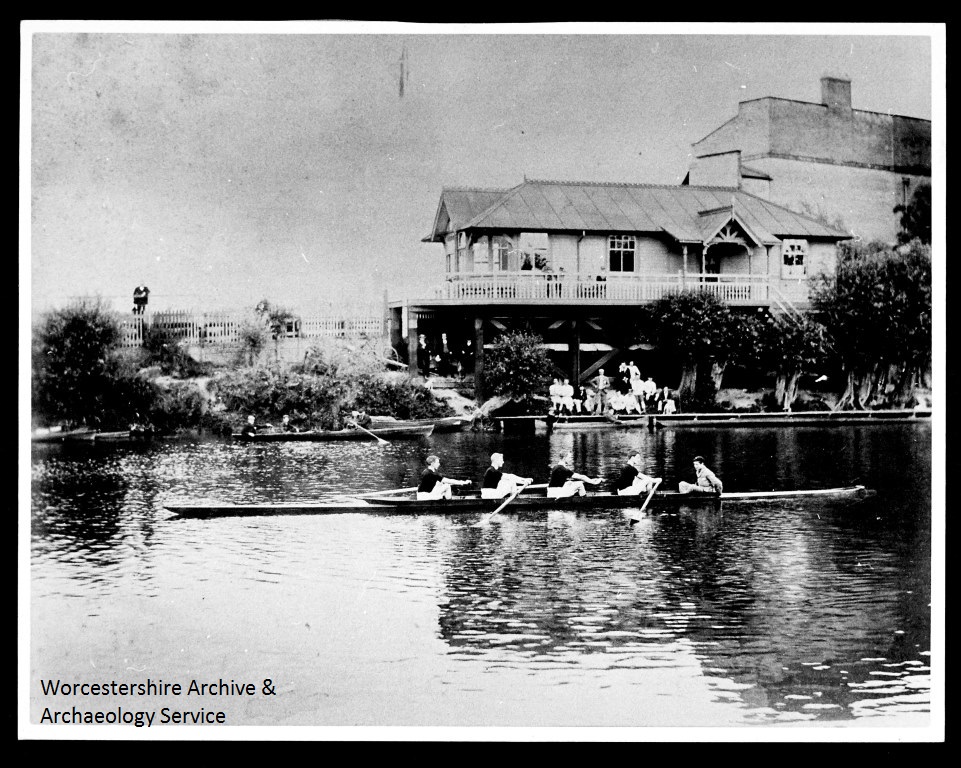The History of Rowing in Worcestershire
- 4th October 2019
Using local newspapers Dr Frank Gilligain has discovered some fascinating facts about the history of rowing within the county.

| Everyone knows about the success of Worcester County Cricket Club and has enjoyed a day out at the races at Pitchcroft but did you know that Worcestershire has had a long and varied sporting history?
Dr Franks Galligan is in the process of making an extensive search of local newspapers, which we hold here, in order to trace the development of certain sports within the County, and he’s shared some of his findings about rowing with us:
The Worcester Rowing Club can trace its foundation to 1874 but predating this there were a number of Worcester based clubs including the Ariel rowing Club (1841-1881). Indeed Dr Galligan has discovered that, between 1841 and 1905, there were 20 separate rowing clubs in Worcester alone. The earliest club, outside the city, seems to have been in operation at Upton-on-Severn from about 1835.
The first ‘official’ Worcester regatta took place in August 1845 following a course stretching from the Grandstand on Pitchcroft to the Dog & Duck Ferry about 1½ miles away and involved prize money of 80 guineas.
Women took part in regattas from around 1895 and were usually in double sculling events with each boat having a lady and a gentleman sculling and a lady cox.
There appears to have been great controversy and debate about who should take part in these events. In Worcester there had been a number of so-called ‘professional’ events, mostly involving boatmen and others who earned their living on the river, whose monetary prizes were advertised. Letters in the local press would seem to suggest that such competitions were frowned upon by amateur sportsmen who believed that sport should be purely for enjoyment and not for monetary reward. The Berrows Journal of October 30th 1851 noted the dispute between the Intrepid and the St. George’s crews pertaining to the Worcester Regatta. The Mayor and Mr. Sheriff Lucy decided that St. George’s team should be disqualified as one of their crew had been a professional rower from Manchester.  BWJ 30 Oct 1851 In 1861 the Handbook for Rowing, the rulebook of the Amateur Rowing Association, included the famous exclusion clause that no mechanic, artisan (skilled craftsman) or labourer was eligible to row at the Henley Regatta.
The first mention of schools rowing in Worcester is from a local press report dated 1865 when The Cathedral School crew faced a ‘town crew’ in four-oared boats.
Worcester College for the Blind also held regattas involving competitions against old boys, and as this entry from the Berrows Journal of 1915 reports, “…for the first time in history of boat racing a blind crew raced against a sighted public school crew on the Severn”
Rowing’s popularity has ‘ebbed and flowed’ over the years; for instance many clubs floundered with the loss young men in World War I; but the sport is experiencing a resurgence thanks in part to The Kings School and the Royal Grammar School both offering the sport as part of their physical education curriculum.
|
 Frank is continuing his research and will share about gymnastics and athletics in the county in the future.
Frank is continuing his research and will share about gymnastics and athletics in the county in the future.
We have 300 years of newspapers on microfilm available for anyone to access in The Hive. They are available in the self service area on Level 2. The newspapers are in date order on films in the cabinets, and for some years we have several Worcestershire newspapers. Then help yourself to a Microfilm machine and see what you can fine!
Further to the researches by Dr Franks Gilligan I have over 200 ‘cuttings’ [guesstimate] from 1834 to 1905 which I researched way back when the History Center was in the Trinity.
The first mention of rowing was in the Worcester Journal 24th July 1834 when the varsity students were returning home and challenged anyone to a match within 50 miles of Worcester. The first match was against Ludlow Boat Club followed by Gloucester and Bewdly clubs.
The late Professor Gerry Douds and I were in the process of compiling a history of rowing and we had completed the first third of the story up to and including 1871 – which was to be named ‘Freedom to Row’ – when unfortunately Gerry became ill and eventually passed away before we could embark on the next phase.
The reference to the first regatta course in the article, the course was in fact from Diglis lock to the Grandstand some 1 ½ miles which was in line with Henley Regatta [not then Royal] and deemed the normal distance for racing.
The reason the Regatta was mooted was that the locks and weirs had just been built in the early 1840’s, which raised the level of the river by some six feet. The local dignitaries commenting at the time that “It was the finest stretch of the river in the Midlands and that a regatta should be organised”.
Before the locks, this stretch of the river was, in places very shallow with shoals in certain places [in the summer after periods of very little rain, the river could be forded just below the bridge]. Racing before this was usually at Holt where the river conditions allowed a fair contest.
We have many pictures displayed the Rowing Club dating from 1876 through to the present day including the crew that won at Henley Royal Regatta in 2000.
Peter Richardson
Worcester Rowing Club Historian and Archivist
PS. With regard to other sports. The Worcester Rugby Club [not the Warriors] is approaching it 150th birthday in 2021 and a small group, of which I am one, are hoping to produce a book regarding history of the club and therefore a lot of research has been done particularly using the resources at the Hive.